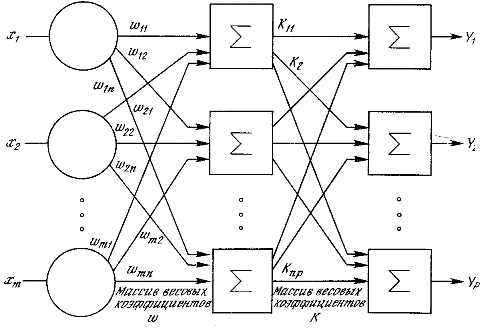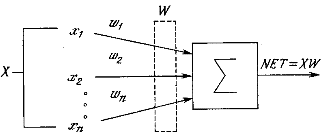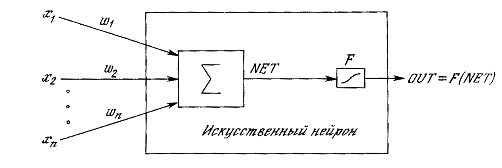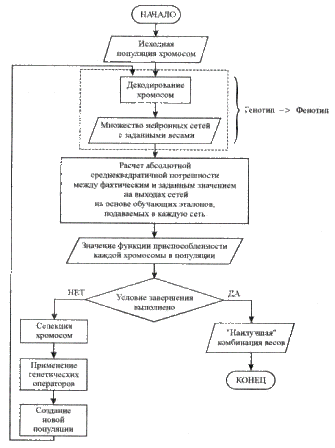RUS |
|
ENG |

|
Zbykovsky Ivan EvgenovichTheme of dissertation: "Designing dedicated computer system for evolution-neural network diagnosis of heart disease"Headmaster: d.t.s., professor Skobcov U.À.Ìy e-mail: Mr.Harison@gmail.com |
The author's abstract to master's work Actuality
Sharp pain in a breast. First aid delivers the patient in an accident ward where the doctor on duty should diagnose and define, whether it is valid a heart attack of a myocardium. Experience shows, that a share of the patients who have transferred a heart attack among acted with similar symptoms very low. Exact methods of diagnostics, nevertheless, till now are not present. The electrocardiogram sometimes does not contain obvious attributes of an illness. And how many all parameters of a condition of the patient can help anyhow make in this case the correct diagnosis? More than forty. Whether the doctor in an accident ward can quickly analyse all these parameters together with interrelations to make a decision on a direction of the patient in cardiological branch? In any measure this problem help to solve neural networks technologies. The statistics is those: the doctor correctly diagnoses a heart attack of a myocardium for 88 % of patients and wrongly puts this diagnosis in 29 % of cases. It is a lot of false alarms (hyperdiagnostics.) The history of application of various methods of data processing for improvement of quality of diagnostics totals decades, however best of them has helped to reduce number of cases of hyperdiagnostics only to 3 %. Reception of the forecast of complications allows the doctor to spend purposefully preventive maintenance, to double the watch over patients, to correct a mode of physical activity of the patient (especially in prospective terms of occurrence of complication). The review of existing researches
In 1990 William Bakst from the Californian university in San Diego used a neural network - multilayered perceptron - for recognition of a heart attack of a myocardium at the patients acting in an accident ward with a sharp pain in a breast. Its purpose was creation of the tool, capable to help doctors whom not in forces to cope with the dataflow, describing a condition of the acted patient. Other purpose can be perfection of diagnostics. The researcher has complicated the problem, as analyzed data only those patients whom have already directed to cardiological branch. Bakst used only 20 parameters among which were age, a floor, localization hurt, reaction to nitroglycerine, a nausea and vomiting, perspiration, faints, frequency of breath, rapid palpitation, the previous heart attacks, a diabetes, a hypertension, a swelling of a cervical vein, a number of features of an electrocardiogram and presence of significant ischemic changes.
The network has shown accuracy of 92 % at detection of a heart attack of a myocardium and has given only 4 % of cases of signals of a false alarm, wrongly confirming a direction of patients without a heart attack in cardiological branch. So, it is available the fact of successful application of artificial neural networks in diagnostics of disease.
Within last fifty years the attention of clinical physicians and scientists is involved in an opportunity of forecasting of current of diseases of cardiovascular system. It, first of all, is connected with presence of real opportunities for the prevention and successful therapy of a lot of complications in case of their duly forecasting. A number of authors for forecasting was used by clinical, clinical -laboratory and clinical -tool data. Other researchers, using clinical data, applied various mathematical methods. Methods of forecasting with calculation prediction indexes have been offered, applied the discriminantal analysis algorithm of recognition of images. However, it is necessary to ascertain, that the results received in these works often did not find wide practical application. It is possible to explain it complexity and bulkiness of the some people prediction rules; Use for forecasting results of supervision over patients during all period of illness, down to the moment of development of complication; impossibility train and perfection prediction expert systems on new data; use for forecasting complex expensive diagnostic researches which carrying out is probably far not in all clinics.
The technique of computer neural networks (NN) which have received enough wide circulation in the end of XX century is deprived many set forth above lacks. However wide recognition was preceded almost with a quarter-century laborious work on transformation of theoretical bases of a technique into the whole section of computer science.
The purpose and tasks of work
There is a plenty of software products in the world which are based on neural networks and help doctors to diagnose diseases. But lack of these programs is that they are trained on the given various regions. The neural network trained on examples of America and putting there the correct diagnosis will not approach for our region. Therefore the purpose of master’s work will be creation neural network, to adequate our conditions. Mathematical model
As mathematical model of researches has been chosen multilayered feedforward neural network with nonlinear functions of activation since the multilayered network wins on computing capacity before single-layered only in that case when function of activation in the latent layers nonlinear [2]. The structure of such network is presented in following figure:
 In "feedforward" form a neural network is a collection of connected activatable units ("neurons") in which the connections are weighted, usually with real-valued weights. The network is presented with an activation pattern on its input units, such a set of numbers representing features of an image to be classified (e.g., the pixels in an image of a handwritten letter of the alphabet). Activation spreads in a forward direction from the input units through one or more layers of middle ("hidden") units to the output units over the weighted connections. Typically, the activation coming into a unit from other units is multiplied by the weights on the links over which it spreads, and then is added together with other incoming activation. The result is typically thresholded (i.e., the unit "turns on" if the resulting activation is above that unit's threshold). This process is meant to roughly mimic the way activation spreads through networks of neurons in brain. In a feedforward network, activation spreads only in a forward direction, from the input layer through the hidden layers to the output layer.  The summarizing block corresponding a body of a biological element, puts the weighed inputs algebraically, creating an output which named NET. In vector designations it can be written compactly down as follows: NET = XW [2]. Signal NET further, as a rule, will be transformed by activation function F and gives target neural signal OUT.  As functions of activation in conditions of the given problem used functions from a sigmoid class: 1. logistic:  2. hyperbolic tangent  As an estimation of error is used following function:  ãäå yj – value of j-th output of neural network, dj – target value of j-th output of neural network, p – number of neurons in output layer.
As a method of training of a neural network is the genetic algorithm.
Several problems associated with the back-propagation algorithm (e.g., the tendency to get stuck at local optima in weight space, or the
unavailability of a "teacher" to supervise learning in some tasks) often make it desirable to find alternative weight training schemes.
Each chromosome was a list (or "vector") of weights. The weights were read off the network in a fixed order
(from left to right and from top to bottom) and placed in a list. Notice that each "gene" in the chromosome is a real number rather than a bit.
To calculate the fitness of a given chromosome, the weights in the chromosome were assigned to the links in the corresponding network,
the network was run on the training set and the sum of the squares of the errors (collected over all the training cycles) was returned.
Here, an "error" was the difference between the desired output activation value and the actual output activation value.
Low error meant high fitness [5].
 Planned results
It is planned to train a neural network on the examples given by branch of urgent cardiology of IURS of Gusak collected for 10 years of supervision.
It is supposed to achieve accuracy of reaction of neural network not less than 80 %. ConclusionEvolution of methods of a scientifically-practical prediction of the forecast of diseases, their outcomes as a result of treatment has caused development of an independent direction - forecasting in medicine. Earlier, that preceded diagnostics, doctors of an antiquity and Middle Ages carried out accumulation of the isolated facts, ascertaining of natural outcomes of diseases and attempts to classify them on dominating symptoms. In XIX century for the first time it has been shown, that application of the mathematical analysis in medicine promotes achievement of accuracy received results. This thesis also has been confirmed by domestic scientists in practice. The modern scientific prediction is integrated branch of knowledge with such sections of a science: topographical anatomy and operative surgery, immunology, beam diagnostics, ýíäîñêîïèÿ, biophysics, laboratory diagnostics, transfusional medicine, etc. For realization of problems of forecasting now are used following methods of the system analysis: statistical, the discriminantal analysis, a method of the least squares, variational numbers, modelling, neural networks. Computer neural diagnostics is optimum means of a choice for carrying out of forecasting in conditions of the incomplete information. It concerns to the cases consisting of supervision of clinical character [4]. This type of computer diagnostics also has been assumed as a basis of masters works. Bibliography1. Rossiev D.A., Golovenkin S.E., Shulman V.A., Matyushin G.V. Forecasting of complications of a heart attack of a myocardium by neural networks, 1995.-pp.128-166.http://cache.rcom.ru/~dap/nneng/nnlinks/book2/gl5.htm 2. Yosserman F. Neurotechnics: the theory and practice. M.:1992. 3. Rutkowska D., Pilinski M., Rutkowski L. Sieci neuronowe, algorytmy genetyczne i systemy rozmyte. 2004.-pp.250-306. 4. Solomakha A.A., Artyuhin V.V. THE NEW NEWRAL NETWORKS TECHNOLOGY IN MEDICINE. State University, Penza, Russia, 2004 5. Mitchell M. An introduction to genetic algorithms. London, Cambridge 1999. |
|
| My biography | |
| Dissertation | |
| Library | |
| Links | |
| Search report | |
| Individual task | |
